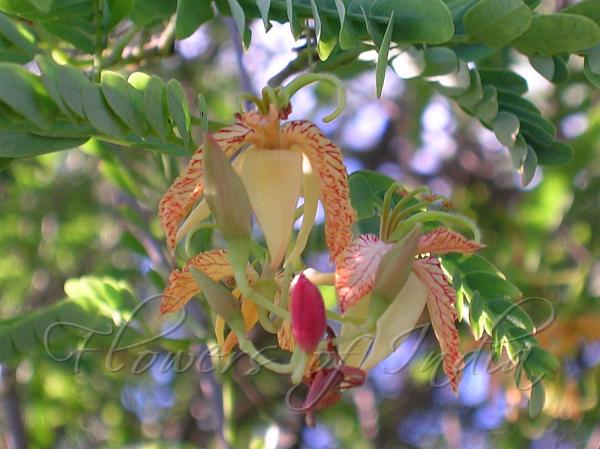|
| Tamarind |
|

|

| File size | 182583 |
| Original date | 7/27/05 5:57 PM |
| Resolution | 2048 x 1536 |
| Flash | Flash did not fire, auto |
| Focal length | 16.2mm |
| Exposure time | 1/75s |
| Aperture | 4.9 |
| Focus Distance | |
| Metering Mode | Partial |
| Camera make | NIKON |
| Camera model | E3700 |
| Sensor type |
|
|
|
Photo: |
Botanical name: Tamarindus indica Family: Caesalpiniaceae (Gulmohar family)
Tamarind is a very common large tree with a short massive trunk, ferny
pinnate leaves, small yellow flowers and fat reddish brown pods. The tree can
get 90 ft tall but is usually less than 50 ft. It has a
short, stocky trunk, drooping branches and a domed umbrella shaped crown about
as wide as the tree's height. The leaves are about 10 in long with
10-18 pairs of 1 in oblong leaflets. Tamarind drops its leaves in
pronounced dry seasons; in climates without a dry season it stays evergreen.
The flowers are about 1 in across, pale yellow with purple or red
veins. They have five unequal lobes and borne in small drooping clusters. The
velvety cinnamon brown pods are 2-6 in long, sausage shaped and
constricted between the seeds. The pulp that surrounds the 8-10 seeds is both
sweet and extremely sour, and girls in India love it. It is common to have
a tamarind tree in the compound of a girls hostel. Tamarind is very much
used in cooking in India, particularly in the south. Contrary to popular
belief, Tamarind is not native to India. It originated in tropical Africa,
including Sudan and parts of the Madagascar dry deciduous forests. It was
introduced into India so long ago that it has often been reported as
indigenous here, and it was apparently from India that it reached the
Persians and the Arabs who called it "tamar hind" (Indian date, from the
date-like appearance of the dried pulp), giving rise to both its common and
generic name. The species name indica also gives the misleading
impression that it originated in India.
| Identification credit: Thingnam Girija | Photographed in Delhi & UP. |
• Is this flower misidentified? If yes,